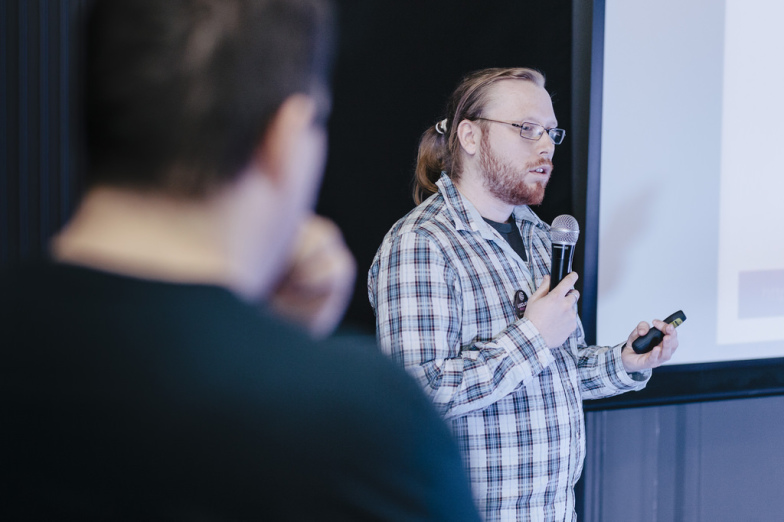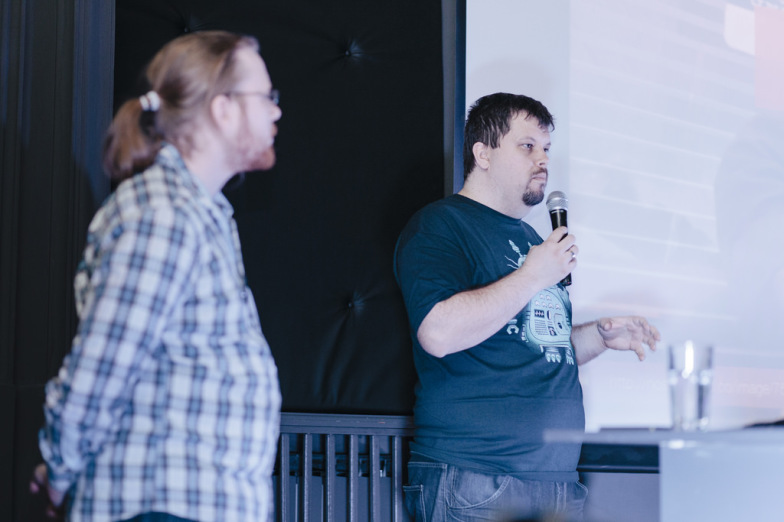For our first World Information Architecture event, we invited the Blagonić Brothers. Enjoy their “IA - reality is not a dream” session.
Never stop learning, never stop talking…
Emanuel argues that IAs are basically in the business of talking to people. Talking about projects, understanding problems and solving them. Ever-changing process is a normal thing and should be embraced. But it is key to convince clients that IA is important and clearly outline the benefits, including increasing potential conversion; lower bounce rate; enabling users to find the right content and stay on the page longer; and, of course, to use IA as one of the key elements in differentiation between competitors.

“You never stop learning, you never stop talking and communicating with a client. Sometimes we are not just designers, we are almost psychologists,” Emanuel points out. “It usually starts with initial interview – that’s our starting point, maybe even the most important part of the process,” he continues. In this way the brothers can be more agile and to plan ahead – sometimes even two, three or five years ahead. Naturally, things can and do change, but good planning is always appreciated.
One of the common mistakes is missing the opportunity to position ourselves as experts. The client has hired us because they believe in us, they pay us to solve their problems and to deliver them results. So, we should behave like experts; we should educate, guide and lead.
Content first and content-driven
But back to practicalities. Lucijan believes in “content-first” and content driven design. Also, he says, we need real content and shouldn’t use “Lorem Ipsum” since it will not enable us to build realistic cases and representations of actual content architecture. To organise content, Lucijan and his brother tend to use services like Dropbox to create folder and file structure that will later be made into actual website content. You can learn a lot if you let the client make organisation decisions at the folder level and move them away from even thinking about visual design, he argues. Leave design to designers, he says, and deal with content, meaning and structure.
Lucijan also quotes Brad Frost:
Get your content ready to go anywhere because it’s going to go everywhere.
Well thought-out IA will enable you content to behave no matter what device you are using to access it, be that desktop, tablet or smartphone.

After content comes definition of wireframes, sketches, maybe even prototypes. Clients tend to like prototypes since you have to prioritise: solving main challenges such as page and site navigation, primary and secondary content, and page structure itself.
Feel free to ignore the details, Lucijan invites us. Keep in mind that there are differences between structure and (visual) design. He also invites us to apply his “No CSS” trick – take a look at how your webpage renders with CSS turned off. Is it still usable? Is the structure still in place?
Web structure and accessibility
Closely tied to content and structure is the modular/widget-like approach to website creation. The idea is simple – organise content, imagery and related elements in (re)usable modules which can be used throughout the website. Then think about styleguides or so-called “element collages” depicting key functional modules of a webpage. Think of them as building blocks that could be used to create almost any type of page you might need. Lucijan points out http://style.codeforamerica.org/ as a solid example – so feel free to check it out.
The Blagoni? Brothers also pay attention to WCAG (Web Content Accessibility Guidelines) whenever possible.
Some key efforts are ensuring that content is:
- adaptable (can be presented in different ways without losing information or structure),
- readable (making sure that character count per line is not over 75, that proper font type and font sizes are used),
- navigable (it provides users with ways to navigate, find content and determine their current position).
To go a step further one could use ARIA (Accessible Rich Applications) and use landmarks such as banner, content, navigation, search, main and many others as well as numerous other semantic elements, many provided and described on Schema.org
Conclusion
While there might not be a clear and unique definition of IA, there are key elements when it comes to making IA a reality not a dream and implementing it in the design process. It starts with client education.
We are not just designers or architects; we are storytellers and problem-solvers. We are experts and leaders but be humble – your task here is to create and contribute; to make a meaningful change.
To be sure you are able to do so, test your assumptions. Use real content. Prototype and then test again. Learn along the way, and keep the future in mind. While you can’t possibly know what will happen in two, three or five years’ time, you should be courageous and smart enough to try and anticipate. Learn and adapt. Build modular structures and adapt them to different devices.
At the moment of writing this blog post (spring 2014) there are some early signs of wearable computing and IoT – the future is exciting and while information architecture and content itself will be one of those things that will stick around, semantics (ways of organising, representing and adding meaning) will likely drastically change. And so will design processes. Be ready to embrace to change, to educate and to anticipate.